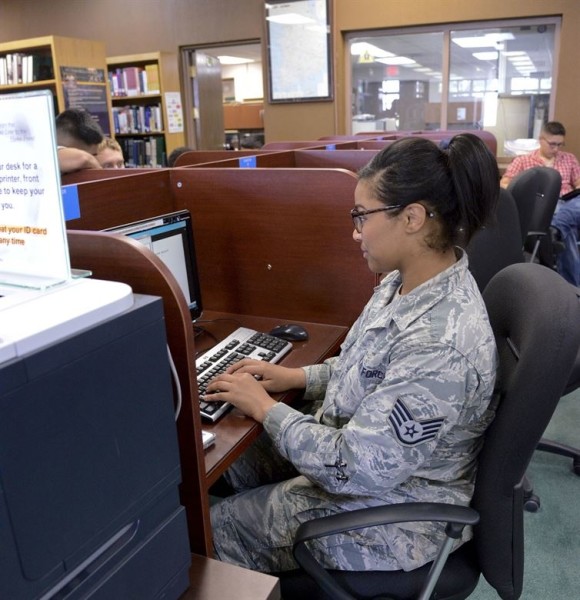

Choosing to serve in the military was an easy decision. Deciding what you want to do with your life can feel a little more daunting. Selecting a university and a program that’s right for you feels downright overwhelming.
You know you can always go back to your hometown and get an entry level job in your mom’s / dad’s business; or, you might really want to pick a school that actually has a chance at winning some sort of bowl game and sells their fan gear on Amazon. Not to completely rule those out, as some of them have amazing programs, but shouldn’t you put some thought into finding a right-fit school for you?
Truth is, choosing a right fit school and program for you is one of the most important decisions you’ll make and shouldn’t be taken lightly. In fact, it’s so important that Columbia University launched the Center for Veteran Transition and Integration (CVTI) to have a direct and lasting impact on the issue of veteran transition and upward mobility by creating and providing access to the best-in-class tools and programming veterans need as they transition from active duty service to college and the workforce. This includes easily accessible online content to walk you through these critical decisions.
Without it, you might fall into the trap of 5 epic fails service members and veterans often make when determining whether or not to pursue higher education:
1. Jumping in too fast
Knowing that your time in the military is coming to a close can add a tremendous amount of pressure to find a job, and quickly, or to use your benefits, and quickly. Taking the time to look at your long-term plan won’t set you back; it will only set you up for success.
Taking the first job offered instead of looking at higher education as an option is a common mistake transitioning service members make. And once you’re knee deep in the workforce, it’s even harder to go back. On the same hand, rushing to use your GI benefits without doing your proverbial homework can burn you.
2. Not knowing what you need
So you’ve made the decision to go back to school. Step one: check. Now, how to do it. Sure, doing your courses “at your own pace” and “from anywhere” sounds incredibly appealing. However. To thine own self be honest: Are you motivated and accountable enough to work at the pace you need to be working? Can you balance a family or a job and an online university with deadlines?
If you go through CVTI’s Attaining Higher Ed course, you will be guided through these questions so, not only are you applying to schools that have the programs you need, but that also have what you need to set yourself up for success. Maybe you need an amazing veteran resource center with a pool nearby, or maybe you need libraries that stay open all night. Either way, you need to think through your ideal habitat for success.
Do some soul searching and come up with a list of what you need to be successful. For some people, that’s the flexibility to watch lectures at midnight. For others, it’s having a set class time at a brick and mortar institution. Know what you need before you decide on what type of college or university to attend.
3. Picking a school, not a program
We get it; you’d be the fourth generation to go to Whatever School, but before you send in that first tuition check, research the programs available and see if they align with your ultimate goals.
If your goal is to own a business, then finding a school with a great entrepreneurship program should top your priorities. Likewise, if you have a specialty in mind (nursing, journalism, flying drones, you name it), then make sure you’ll be able to get the required credits in that field in order to graduate without having to transfer schools. Thinking through these personal, soul-searching questions is what’s known as intentional decision-making and we think that is a step that shouldn’t be skipped.
4. Not taking advantage of tuition assistance
Oh young grasshopper, we know that GI Bill is such a giant perk, but, did you know you can use Tuition Assistance while you’re on active duty? Congress has authorized each of the services to pay for your education up to certain amounts and with approved programs. If the program you are interested in costs more than TA permits, you can “Top Up” the program using your GI Bill. One challenge though is that not all credits are created equal and transferable, depending upon where you want to apply. If it’s critical for you to keep those brain muscles flexing before you exit, we get it, but you may need to kiss those credits goodbye depending on the college or university to which you apply.
5. Choosing a school without a military program or culture
One of the biggest mistakes service members and veterans can make in selecting higher education is not paying enough attention to whether or not the college or university actually understands your service.
Going back to school is hard enough, but being surrounded by people who don’t understand your military background can be isolating. Choosing a school that has dedicated resources for service members and veterans ensures that you have someone who will not only understand your service but will advocate for you, too.
If you’re able to admit that your years of service and dedication may not have ingrained in you how to take care of yourself in your future academic life and career outside of the military, then you should strongly consider exploring CVTI’s other courses University Studies for Student Veterans and Find Your Calling.
First decision made. CVTI.
This post sponsored by Columbia University Center for Veteran Transition and Integration.
